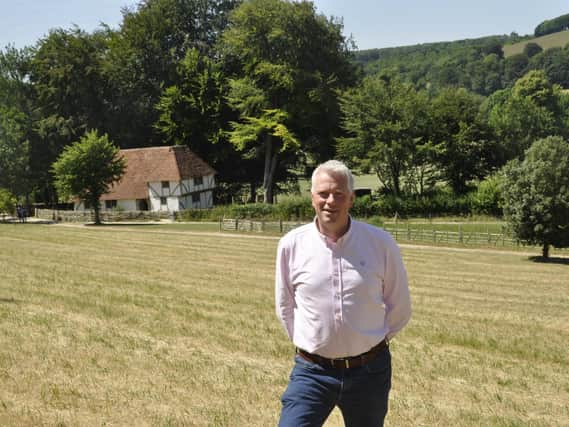Why pre-booking might be here to stay at Weald & Downland Living Museum


The result is that the museum, after an utterly bleak spring, can now start looking forward with confidence to its 50th anniversary this September.
Simon is quick to stress it won’t be a time of huge celebration; the occasion will be marked in a way which is in keeping with the year we have all had.
Advertisement
Hide AdAdvertisement
Hide Ad“It is important to market the anniversary, but it is not going to be something that is perceived as extravagant or has a high cost. It would be inappropriate to do anything that sent out a big celebratory message right at the moment.”
On September 5, the date the museum officially opened to the public 50 years ago, there will be a 1970s-inspired birthday picnic, which will be an exclusive ticketed, evening event. Guests will be provided with a special Weald & Downland hamper and will be encouraged to dress up in costume from that era.
Over the weekend (September 5-6), there will be a series of demonstrations and displays as part of a special Historic Life Weekend to coincide with the anniversary, showcasing all that is great about the museum and the traditional crafts, skills and architecture it works so hard to preserve.
It will crown a return to opening which has gone extremely well, Simon is delighted to say.
Advertisement
Hide AdAdvertisement
Hide Ad“We took the approach that initially we used our museum as a green open space and not as a museum which we road-tested with our members for a couple of weeks from June 22. We had two weeks of great feedback and were able to open to the public on July 6. By the time July 6 had rolled around, we had set up a pre-booking system which was set at 400 day, which has allowed us to divide those numbers across five slots.
“We are still limiting numbers. But one of the many unintended consequences of COVID has been that pre-booking has worked really well and has allowed us to plan our activities across the day so much better. It allows a flow through the museum. We have always been hampered by spikes of coaches or big parties just arriving. Knowing that there would be 400-500 people each day has made things so much easier, and we have now set that at 600.”
And it’s an approach likely to stay: “There is a very strong case to stick to pre-booking. We have chatted to a lot of visitors, and the fact is that human behaviour has adapted, that when we are visiting leisure or hospitality places, we are used to pre-booking now. Everyone is aware what it means, and the consequence is that throughout July it was very well received.
“For me, it is about being able to provide the quality of experience rather than pushing for large numbers of visitors through the door. Our membership is continuing to grow, and we have retained virtually all our membership base, and I like to think that we have handled our membership in a way that has endeared them to returning.”
Advertisement
Hide AdAdvertisement
Hide AdThe crucial issue was rebuilding confidence. After months of closure, there was bound to be trepidation, but the fact that the numbers are so clearly managed and the fact that there is no queuing have helped considerably, Simon says.
“We were damaged undoubtedly by the pandemic, by loss of income from admission. We were very fortunate to have the established endowment trust that helped meet the shortfall. We have also taken advantage of the government schemes, principally furlough. We have had 85 per cent of our staff on furlough at certain times. We knew we were looking at a significant loss this year, but we worked really hard for as early a reopening as possible.”
Sadly, the museum had to make a fifth of its permanent staff redundant: “That has meant that we can focus on the front-of-house visitor experience. We have retained the people who are customer facing.
“We have learnt that when a crisis like this comes along, you need to adapt quite quickly and you need to be thinking ‘How are people going to be viewing organisations like ours?’ We have needed to re-establish confidence with people, and I like to think that we have done that. We pay close attention to Trip Advisor and to Facebook and Instagram, and I would never be naïve enough to think we have managed it 100 per cent, but I would like to think that we have got nine out of ten for the way we have done things.”